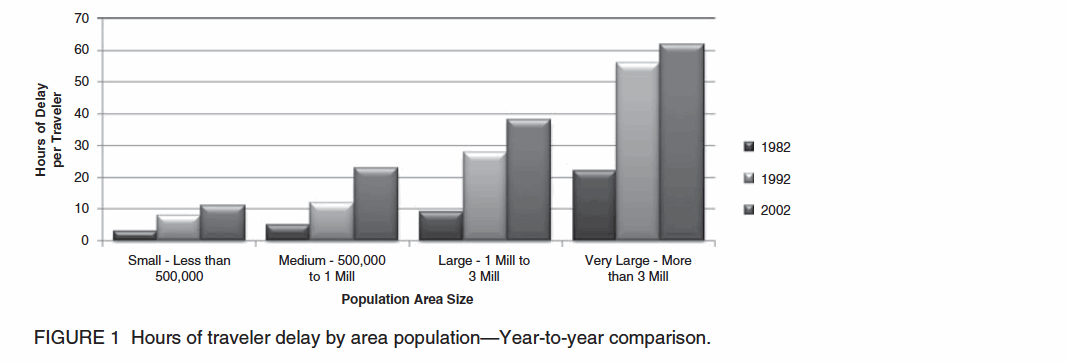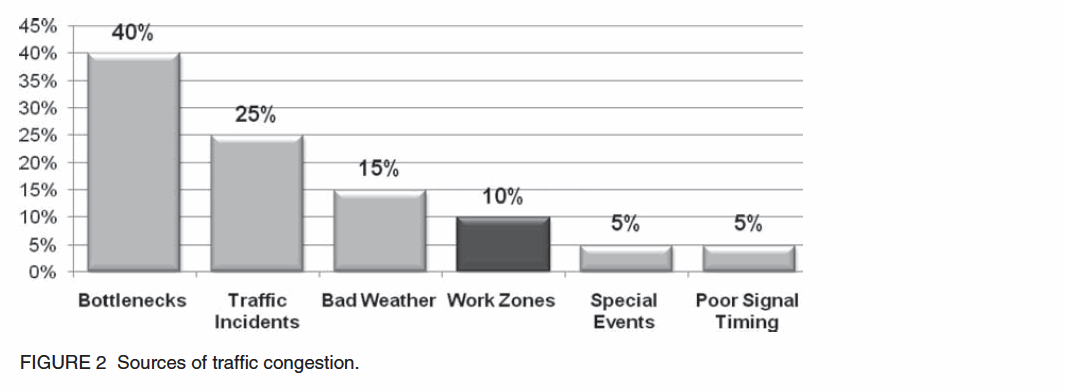TRANSPORTATION RESEARCH BOARD
SUMMARY
Construction projects in congested urban corridors have been a challenge for many years. High-traffic volume is just one of many concerns that need to be resolved. Adding significant utility conflicts and relocations, complex right-of-way (ROW) acquisition actions, a diverse stakeholder base, and more attentive media markets makes normally difficult work even more complicated.
This study focused on techniques used by transportation agencies to deal effectively with these and other challenges. Many different tactics have been tried with varying success levels. The purpose of this report was to identify strategies being used, determine how agencies rated their success, and examine applicability to other projects.
This study is in three parts. First, a literature review was conducted to examine published works relevant to this subject. Next, 21 states, and the city of Chicago and San Francisco County responded to a survey consisting of 68 questions aimed at illuminating the impacts and strategies associated with these urban projects. Finally, four case studies were examined and specific strategies described as used on those projects that would be interesting to the industry.
Key findings include:
- Contrary to common thought, most urban projects are valued at $100 million or less— as opposed to being mega-projects. Therefore, strategies must be designed to accommodate smaller projects in an urban environment.
- Design-bid-build is the most common contracting method used by these agencies for their urban projects. The agencies and their industry partners are comfortable with this long-proven contracting methodology.
- Financial incentives and disincentives are commonly used to address schedule concerns held by the transportation agencies.
- Utility conflicts and relocations are major factors that impact cost and schedule. Virtually every urban project is influenced by utility issues. Early and ongoing coordination are key to mitigating these impacts; however, no agency indicated their total elimination of such conflicts on urban projects.
- The ROW acquisition process continues to be cumbersome for both residential and commercial properties. If condemnation is involved, in many cases the process extends beyond a year. Under ideal conditions agencies would like to secure all ROWs before construction begins; however, in many cases they move ahead anyway when they are unable to fully clear all the parcels.
- The diversity of stakeholder groups is striking; however, agencies continue to focus most specifically on businesses, the traveling public, and elected officials. Standard tools such as public meetings and notices in the newspaper and on doorsteps are still used, but Internet utilization has now become dominant in communicating project information. Of interest is that the most common communication tools (e.g., newspapers and public meetings) are seen as being among the least effective and yet they continue to be used. The agencies do not typically have robust measurement tools in place for assessing the effectiveness of their communication strategies. Emerging tools such as social networking sites have been tried, but are not yet used extensively.
- The media is a large part of the agency’s efforts for disseminating information. In spite of anecdotal evidence to the contrary, agencies find the media to be a positive partner in this process and use that relationship to effectively communicate critical project information to stakeholders. Typically, inside spokespersons are used to work directly with the media, although agencies often augment their in-house staff with external resources.
- There is minimal reliance by these agencies on other modes of transportation to mitigate the vehicle throughput restrictions on a given corridor during construction. Little benefit is seen and commensurate effort is invested in these other modes. That said, early coordination with transit, bicycle, and pedestrian groups is seen as a good thing and most agencies do it but with the focus on accommodating their movements and not as a diversion of ridership.
- Every project must address traffic management. The consistency of the common strategies is significant, including frequent use of partial and full closures; liquidated damages assessed for poor performance; and agency focus on impacts beyond project limits. Almost every agency reported that they use their traffic management center as a tool for managing traffic during construction.
- Various approaches emerged from the four case studies. The actions were not consistent from project to project, but reflect conscious effort on the agencies’ part to use actions unique to project circumstances. Actions such as incentives, management of road closures, communications with stakeholders, and others are relatively common. Noteworthy is that some of the common approaches were modified to suit the specific circumstances of the given project. These were then coupled with new innovations, such as the “windowed milestones” and “delayed start” clause, which further assisted in mitigating the impacts of transportation work in urban areas.
No single strategy will fit every project; however, the available choices offer solutions for many different needs. Early involvement is an important attribute of any mitigating strategy, whether dealing with utilities, ROW, stakeholder relations, or working with the media. Agencies use proven tools and modify them to meet current project needs. Innovation has paid off in significant benefits where agencies have moved to implement new ideas. Ultimately, the challenge for agencies is to find the right combination of new and old strategies to meet project’s requirements.

 Download full version (PDF): TECHNIQUES FOR EFFECTIVE HIGHWAY CONSTRUCTION PROJECTS IN CONGESTED URBAN AREAS
Download full version (PDF): TECHNIQUES FOR EFFECTIVE HIGHWAY CONSTRUCTION PROJECTS IN CONGESTED URBAN AREAS
About Transportation Research Board
www.trb.org
“The mission of the Transportation Research Board is to provide leadership in transportation innovation and progress through research and information exchange, conducted within a setting that is objective, interdisciplinary, and multimodal.”
Tags: NATIONAL COOPERATIVE HIGHWAY RESEARCH PROGRAM, NCHRP, The National Academies, Transportation Research Board, TRB






 RSS Feed
RSS Feed